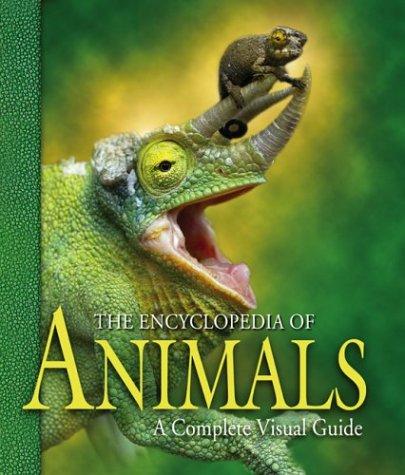Stepping into the pages of The Encyclopedia of Animals by Jenni Bruce, published in 2003, is like embarking on a grand safari without ever leaving your armchair. This isn’t just another dry collection of facts; Bruce, an experienced natural history writer, brings the animal kingdom to life with her engaging prose and meticulous detail. The book stands out not just for its breadth, covering a vast array of creatures, but also for its accessibility, making it a perfect companion for anyone curious about the natural world. The early 2000s saw a surge in public interest in conservation and wildlife, giving this publication a particular relevance, bridging scientific understanding with everyday curiosity.
Content Overview
The Encyclopedia of Animals isn’t structured as a linear narrative; instead, it’s organized taxonomically, allowing readers to explore the interconnectedness of life on Earth. Bruce begins with an overview of animal classifications before moving into detailed descriptions of individual species and groups. From the smallest insects to the largest whales, each entry is packed with information about their habitats, behaviors, and unique characteristics. What makes this encyclopedia so effective is how it balances scientific rigor with an approachable tone. It’s designed to inform without overwhelming, making it a useful tool for both students and casual readers.
Practical Application
While it’s an encyclopedia, and not a field guide, The Encyclopedia of Animals is very useful for learning to appreciate the delicate balance of nature and the importance of conservation. For example, the sections discussing endangered species are not just filled with facts but also touch on the human impact on animal populations. One of the most useful aspects is the inclusion of distribution maps for many species, which brings a tangible sense of where the animals reside and how climate change and human encroachment are impacting them. The book can serve as a great starting point for research on specific animals or even to inspire conservation efforts.
Research & Authority
Bruce’s expertise shines through her clear and concise writing, and it’s clear she has a deep passion for her subject. The information in The Encyclopedia of Animals is based on the most current scientific research available at the time of publication, which is backed up by the vast bibliography provided. The book avoids overly technical language, making it accessible to a broad audience, yet the science is still accurate and dependable. While there have been advances in zoology since 2003, the core principles and the information presented about the animals remain highly relevant. You can find this book on Amazon.
Writing Style & Narrative Techniques
Bruce’s writing style is a key component of this book’s success. She doesn’t just list facts; she crafts narratives around each animal, allowing the reader to visualize them in their natural habitats. Her ability to make scientific details engaging is quite remarkable. She uses vivid descriptions that draw you in, almost as if you are watching these animals in real life. The clear and organized structure makes it easy to navigate, whether you’re looking up a specific species or just browsing for new discoveries.
The pacing of the book is also very well done; even though it’s an encyclopedia, it never feels monotonous. Each entry is concise and engaging, encouraging readers to keep turning the pages and learn more. This is not a book to rush through but one to savor, allowing each entry to fill you with curiosity and appreciation. You can check out this book on Amazon.
Conclusion
The Encyclopedia of Animals is more than just a reference book; it’s a celebration of the diversity and wonder of the natural world. Its comprehensive coverage, engaging writing style, and beautiful illustrations make it a valuable addition to any home library. What I find most compelling is that this book instills a sense of responsibility to protect the animals and their habitats; reading it, I was left with a deep sense of wonder and a stronger commitment to conservation. It’s a book that fosters not only knowledge but also a profound emotional connection to the creatures we share our planet with.
I wholeheartedly recommend this book to anyone interested in learning about the animal kingdom. Whether you’re a student, a nature enthusiast, or just someone curious about the world around you, this book will be both educational and inspiring. If you enjoyed this book, you might also like The Life of Mammals by David Attenborough or National Geographic Complete Guide to Wildlife. This book is available for purchase at Amazon. Its ability to blend scientific information with engaging narrative makes it a truly special read. It’s a book that I can see myself revisiting time and again, each time discovering something new and wondrous.
The author has done a fantastic job in creating a resource that is as engaging as it is educational. This is an encyclopedia that truly comes alive, making the reader feel connected to the animal kingdom in a way that few other books do. You can find it at Amazon.

